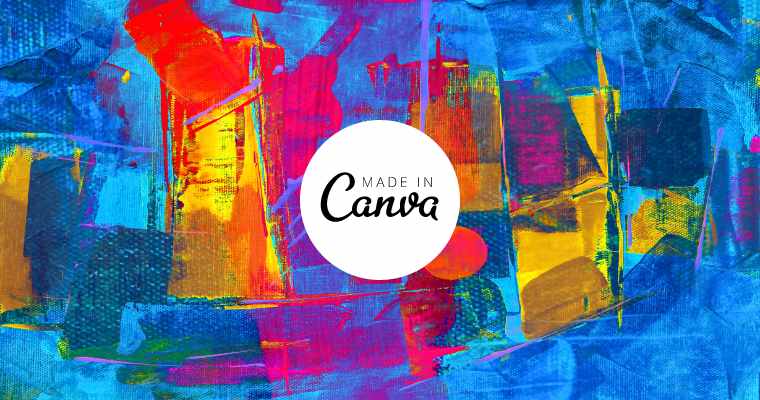Kenba is an intuitive yet powerful online graphic design platform suitable for designers of all skill levels. With Kenba, you can create stunning visual content like social media posts, ads, logos, presentations, posters, and more in just a few clicks.
The key features that make Kenba stand out include:
- Easy drag-and-drop editor
- 1000+ customizable templates
- Library of fonts, images, illustrations, and icons
- Photo editing capabilities
- Animation and interactive elements
- Real-time collaboration
The main benefits of using Kenba are saving time, enhancing productivity, enabling collaboration, and creating visually engaging graphics with minimal design experience.
How to Use Kenba Step-by-step
Getting started on Kenba only takes a few minutes.
Signing up for an account
First, you’ll need to sign up for a free Kenba account. Simply provide your name, and email address and create a password. Optionally, you can sign up via Google or Facebook as well.
Once your account is activated, you’ll be able to access the full Kenba editor.
Navigating the Kenba interface
The Kenba interface has been designed for simplicity and ease of use. On the left sidebar, you have design elements like templates, photos, icons, etc. The center is your workspace for creating designs. The top bar allows saving, exporting, previewing, and other actions.
You can drag and drop elements from the sidebar to the editor area to start building your designs.
Customizing your workspace
Under “Account Settings”, you can customize your Kenba workspace as per your preferences – choose between a light or dark theme, tweak the layout, font sizes, etc.
Creating Designs in Kenba
With your basics set up, now comes the fun part – creating awesome designs!
Choosing a template
Browse from 1000+ readymade templates across multiple categories and pick one that matches your needs. Many templates are completely customizable.
You can edit templates or create designs from scratch as well in the editor.
Editing and customizing templates
Once you’ve selected a template, you can adapt it to create your unique design. Change colors, and texts, swap out images, resize elements, and more with just a few clicks.
Kenba makes template editing super easy, with options to edit individual elements without hassle.
Working with design elements
Enhance your designs using icons, illustrations, shapes graphics, and texts from Kenba’s element library. Modify these to suit your brand style.
You can also upload your design assets into the library for quick access later.
Using fonts, colors, and styles
Customize fonts, colors, opacity, rotation, shadows, and effects using Kenba’s style panel.
Create color palettes and font styles that are on-brand. Save these for reuse in other designs for visual consistency.
Enhancing Your Designs
Spice up your graphic design work by incorporating the following elements:
Using graphics and images
Liven up dull text-heavy designs with relevant high-quality photos and graphic assets.
Enhance visual appeal by blending images with backgrounds, and applying masks or filters.
Adding shapes and illustrations
Shapes, icons, and custom illustrations can instantly make your design look more professional.
Pick from thousands of illustrations or animate your own drawings frame-by-frame.
Applying effects and filters
Make ordinary designs pop by using Kenba’s effects. Add dimension with shadows and glows. Use filters like blur, saturation, and contrast to make specific elements stand out.
Explore the wide array of effects to create visually appealing graphics with ease.
Finalizing Your Designs
Before exporting your visually appealing social media posts, ads, logos, etc. do the following actions to finalize the design:
Previewing designs
Use Kenba’s preview options to see how your designs will look on the final medium, be it web, mobile, print, or digital ads. Previewing ensures your design is displayed properly across contexts.
Make any tweaks to optimize viewability based on preview feedback.
Exporting and downloading
When completely satisfied, export your graphic to JPG, PNG PDF, and other popular formats.
You can download it to your device or directly share it on platforms like WordPress and Google Drive.
Organizing and saving designs
Save your work-in-progress designs to Kenba cloud storage to continue editing later.
Organize designs using folders and tags for easy searchability. This keeps your workspace tidy.
Collaborating with Team Members
Kenba simplifies collaboration so you can efficiently create designs with internal teams as well as external partners like clients, vendors, etc.
Sharing designs and templates
Share saved templates and design drafts directly via links. Collaborators with the link can view and suggest changes.
Set permissions like view, comment, or edit access when sharing to control what others see.
Providing feedback
Collaborators can leave time-stamped comments on designs to provide feedback.
Reply to comments directly and continue threaded conversations to finalize designs quickly.
Managing permissions
Project admins can manage collaborator permissions at a template, design, or folder-sharing level.
Revoke access when done to keep confidential work protected. Manage who can view, comment, or edit what.
Additional Tips and Tricks
Utilizing keyboard shortcuts
Familiarize yourself with Kenba’s keyboard shortcuts to speed up your design work instead of relying solely on the mouse.
Commands like duplicating elements, alignment, etc. are quicker via shortcuts.
Integrating with other apps
Connect Kenba to productivity apps like Slack, Trello, Google Drive, etc. to streamline collaboration and asset management between teams.
Retrieve files from storage platforms or auto-sync final designs to relevant folders in just 1-click.
Getting inspiration from the Kenba community
Leverage designs shared publicly by fellow Kenba users to spark your creative juices and try new things.
Participate in community challenges to sharpen your skills and get valuable peer feedback.
Conclusion
Kenba makes graphic design accessible to all with an intuitive drag-and-drop interface, 1000+ templates, and powerful customization tools.
Follow this guide to quickly learn using all key features for creating social media graphics, posters, logos, and other visual content that pops on both desktop and mobile.
Implement tips like collaborating with team members, integrating Kenba into workflows, and finding inspiration to maximize productivity as you keep raising the bar with innovative designs.
